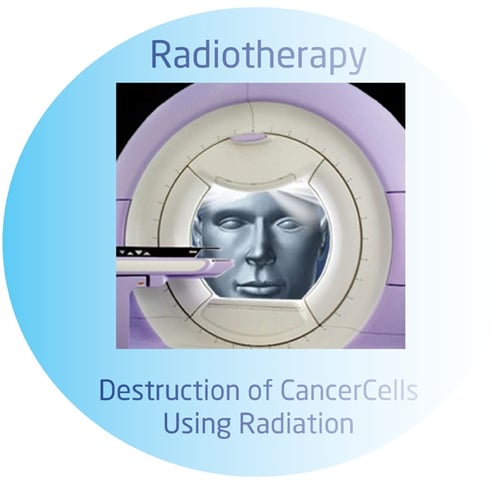In the mission to cure and eliminate cancer, all progress is good progress. Currently, one of the most common treatments for cancer  is radiotherapy. Radiotherapy uses high-energy radiation in the form of x-rays to destroy cancerous cells. It can be administered both internally and externally and is often combined with other types of treatments including chemotherapy and surgery.
is radiotherapy. Radiotherapy uses high-energy radiation in the form of x-rays to destroy cancerous cells. It can be administered both internally and externally and is often combined with other types of treatments including chemotherapy and surgery.
While radiotherapy has been found to be effective at destroying cancer cells, normal cells surrounding the cancer can also be damaged during the procedure. That’s one reason why researchers are devising and testing systems that use MRI technology to more accurately target and destroy cancerous cells. Another added benefit of this new technique is that MRI guided technology allows radiation oncologists to see tumors and the surrounding normal tissue in real-time.
While still being in the research and development phases, it’s clear that this upgrade to radiology practice could transform the way we treat cancer in the future.
How MRI is Changing Radiotherapy
About twenty years ago, radiation oncologists used a combination of hand drawn marks on the patient’s skin and standard x-ray film to guide radiotherapy treatments. This was a highly inaccurate process that often led to collateral damage to surrounding healthy tissue.
Today it’s most common for oncologists to use cone beam CT to target and align radiotherapy treatment with cancer tumors. Cone beam CT is much more accurate than previous methods and has improved the clinician’s ability to see exactly where they’re aiming the radiation. Unfortunately problems remain with this method because there are still many targets oncologists cannot see on a CT scan. During these highly technical procedures CT just doesn’t provide sufficient contrast or fidelity to differentiate between certain types of tissue.
That’s where the highly detailed results of Magnetic Resonance Imaging come in. MR provides physicians with a much clearer view of the tumor and tissue so they can put the radiation exactly where it needs to go. The latest advances in MRI guided radiotherapy combine an MR scanner and a linear accelerator to deliver highly targeted radiation treatment. This MRI guided linear accelerator technique can be used to treat all parts and organs of the body while delivering high-energy x-rays exactly where they need to go.
Added Benefits of MRI Guided Radiotherapy
MRI guided radiotherapy has other benefits in addition to improved accuracy. During an MR guided procedure oncologists will be able to see the treatment in real-time, as it happens. This means they’ll be able to make immediate adjustments for changes in physiology or patient movement. The precision placement ability of MR guided radiotherapy can not only facilitates easier treatment of tumors close to critical sensitive structures but could allow an oncologist to use higher levels of radiation dosing when necessary.
The technique also allows oncologists to create treatments that are specifically tailored for each patient’s biology. Because all patients react differently to radiation, oncologists aren’t always able to predict when a healthy organ will exhibit signs of toxicity to treatment. MRI guided radiotherapy will allow for a radiation oncologist to target and track the cumulative dose to both a tumor and the surrounding healthy tissue over the course of treatment. Eventually researchers hope MRI guided radiotherapy will allow them to see how the body is responding to treatment as it happens instead of waiting the approximate 3 months it currently takes to see results.
Future Implementation
While MRI guided radiotherapy is still in testing and awaiting FDA approval for clinical use in the United States, it is in use clinically in Europe. Researchers and physicians are currently working to perfect the technology and determine how best to implement it across the world.
It’s clear that MRI guided radiotherapy is a positive step forward oncology practice and has the potential to improve outcomes, shorten treatment times and become a life changing tool in the battle against cancer.
f you need MRI technology for your practice, clinic or healthcare facility, be sure to consider the concept of using refurbished or used equipment. You can usually get the technology you want—as well as the warranty and service you need—at much more affordable rates. It makes sense to talk to an expert, like those at Atlantis Worldwide. Contact Us Today!
Some blogs you may have missed:
- The New Era of Digital Medicine
- Can Your MRI Be Hacked?
- Medical Imaging: Fueling the Future of Health Care
- OEC 9800 SUPER C - IS IT RIGHT FOR YOU?
- Confused About MRI Coils?
About the author: Vikki Harmonay




